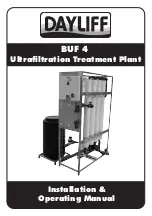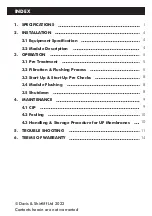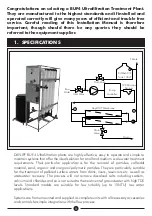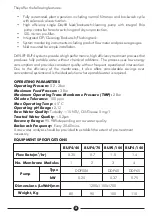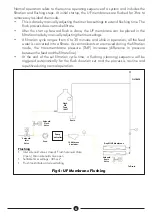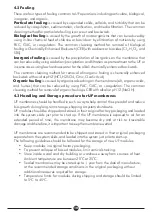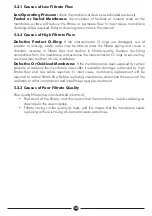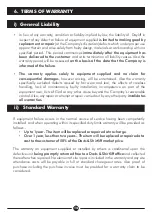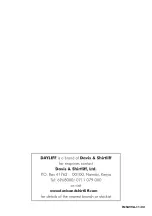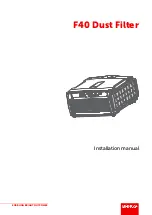
10
4.2 Fouling
There are four types of fouling common to UF operations including particulate, biological,
inorganic, and organic.
Particulate fouling
is caused by suspended solids, colloids, and turbidity that can be
reduced by coagulation, sedimentation, clarification, and media filtration. The common
cleaning method for particulate fouling is air scour and backwash.
Biological fouling
is caused by the growth of microorganisms that can be reduced by
using in-line chemical feed of chlorine or biocide or by elimination of nutrients by using
PAC, GAC, or coagulation. The common cleaning method for removal of biological
fouling is Chemically Enhanced Backwash (CEB) with oxidizers or biocides (Cl , H O , and
2
2
2
SBS).
Inorganic fouling
is caused by the precipitation of inorganics on the membrane that
can be reduced by using oxidation/precipitation and filtration as pretreatment to the UF or
in some cases using low hardness water for the alkali chemically enhanced backwash.
UF membranes should be handled in such a way to help control the spread of and reduce
bio-growth during long-term storage, shipping or system shutdowns.
UF modules should be shipped and stored in their original factory packaging and loaded
into the system skids just prior to start-up. If the UF membrane is exposed to air for an
extended period of time, the membrane may become dry and at risk to irreversible
damage and therefore, it is important to keep the membrane wetted.
UF membranes are recommended to be shipped and stored in their original packaging
separate from the system skids, and loaded into the system just prior to start-up.
The following guidelines should be followed for the storage of new UF modules.
Ÿ
Keep modules in original factory packaging.
Ÿ
To prevent collapse of boxed modules, limit vertical stacking.
Ÿ
Store inside a cool and dry building or warehouse away from sources of heat.
0
0
Ambient temperature are between 20 C ot 35 C.
Ÿ
Sealed membranes may be stored up to 1 year from the date of manufacture,
at the recommended storage conditions in the original packaging without
additional measures required for storage.
Ÿ
Temperature limits for modules during shipping and storage should be limited
0
0
to 5 C to 45 C.
4.3 Handling and Storage procedure for UF membranes
The common cleaning method for removal of inorganic fouling is chemically enhanced
backwash with acid at pH 2 (HCl, H2SO4, Citric, Oxalic Acid).
Organic fouling
is caused by organics adsorbing on the membrane (silt, organic acids,
and humus) that can be reduced by using PAC, GAC, or coagulation. The common
cleaning method for removal of organic fouling is CEB with alkali at pH 12 (NaOH).
Содержание BUF 4
Страница 1: ...Installation Operating Manual BUF 4 Ultrafiltration Treatment Plant...
Страница 2: ......
Страница 14: ......
Страница 19: ......
Страница 20: ......
Страница 21: ...INS499A 11 22 www davisandshirtliff com...

